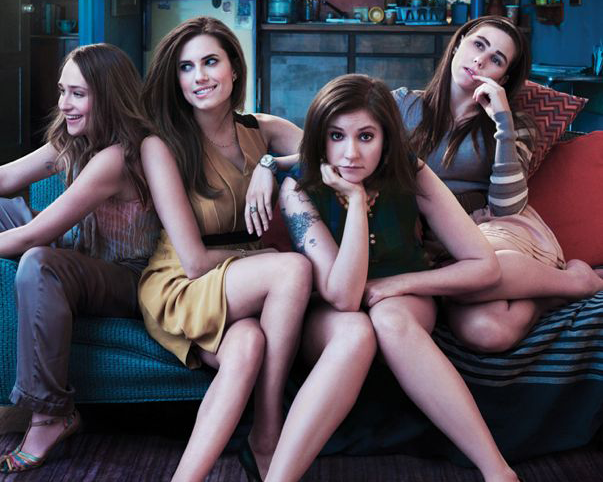By Sasha Moedt (The Cascade) – Email
Print Edition: February 19, 2014
Who doesn’t have a problem with Girls?
The characters are self-centered, their problems are depressing, the show has no racial (or class, for that matter) diversity while being set in the diverse city of New York, and there is nudity seemingly for the sake of nudity, which is annoying. Despite being praised for its portrayal of women and their friendships, there are big flaws — classism and racism, for starters.
And yet Girls is an honest and fearless portrayal of women as women, and, despite its failings, it might be one of the best shows on the air that does.
Hannah (Lena Dunham, also the creator of Girls) is back for season three, along with Marnie (Allison Williams), Shoshanna (Zosia Marnet) and Jessa (Jemima Kirke). The tumultuous events of season two have left Marnie considerably less arrogant, Jessa far more brooding (unfortunately), and Shoshanna a whole lot less innocent. Hannah is just as we left her — though her situation is looking cheerful, so that desperate edge to her has softened.
For the men, there is a focus on Adam (Adam Driver) in all his horrifyingly flawed glory, as well as the cynically insightful Ray (Alex Karpovsky).
The third season’s tone is refreshingly optimistic. Things are going well after the disastrous relationship issues — between almost everyone in the friend group — of season two.
Of course this is the kind of show that keeps you waiting for something horrible or awkward to happen (much like Louie, actually). And it does; a death shakes up Hannah’s plans.
The depiction of poor 20-somethings struggling to find a career after graduating is laughable. In one of the most expensive cities in the U.S., these characters seem to do okay. It’s inconvenient and limiting to have extremely poor characters, especially when you want them to get drunk and go out, wear chic clothes, or even have coffee together. But the basis of the show is evident from the first scene of the first season — Hannah’s parents telling her they won’t be paying her rent. From here we have her grapple with the — supposed — reality of having to support herself. Apparently being barely employed writing an E-book or working at a coffee shop is enough to afford all kinds of upper middle class things.
The lack of racial diversity is disappointing. But at the same time, I would have been more disappointed if there were the few token people of colour (with of course no racial conflict) to appease concerned viewers, because that’s all too common.
The fact of the matter is that Girls gives me something that not a lot of other shows can. It portrays women as people, it delves into feminist issues — body image, harassment, abortion, sex, and relationships — and Dunham does it fearlessly. The show is about my generation trying to live in the adult world, and doing it rather dysfunctionally. I definitely can relate. It deals with social media, procrastination, economic pressures our parents never had to face, and female relationships.
The fire Girls has been under isn’t surprising, and it should be encouraged. I just wonder why the constant flow of cop, political figure, or apocalyptic shows — with the flawed male leads — aren’t as thoroughly criticized.
If you’re looking for shows that genuinely portray diverse people in race, class — heck, even just real women who aren’t there just as romantic interests for a dynamic male lead — you’re not going to have much to pick from. I mean, I dislike most action movies, because they all wallow in the most sexist tropes.
Unless networks get flooded with smarter shows, I won’t stop watching Girls. Despite all the criticism, it’s one of the best we’ve got.



